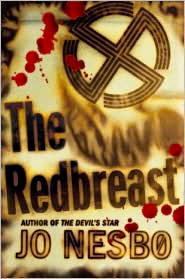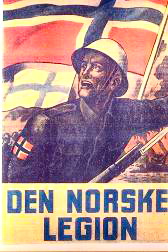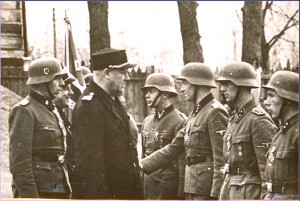Note: This novel was WINNER of a contest by Norwegian Book Clubs to determine the Best Mystery/Thriller of All Time.
“Even in so-called democratic countries the weak willingly concede power to an elite which is stronger and wiser than they. That is just the way it is. And because we’re all God’s creatures, it is the responsibility of superior beings to ensure that inferior beings submit.”
Norway’s r elationship with the Nazis, from World War II to the active neo-Nazi movement of the present day, infuses this thriller with dramatic action scenes which develop increasingly powerful impact as Inspector Harry Hole tries to protect the motorcade of four world leaders who have come to Norway for a conference. President of the United States Bill Clinton, Vladimir Putin of Russia, Yasser Arafat of the PLO, and Israeli Prime Minister Ehud Barak arrive in Oslo for talks in an atmosphere filled with neo-Nazi speeches and the sensational trial of Sverre Olsen, a neo-Nazi leader, who blames every problem Norway has had since 1945 on enemies of National Socialism. Olsen is currently urging protection of the Norwegian “race” against Mosque-builders.
elationship with the Nazis, from World War II to the active neo-Nazi movement of the present day, infuses this thriller with dramatic action scenes which develop increasingly powerful impact as Inspector Harry Hole tries to protect the motorcade of four world leaders who have come to Norway for a conference. President of the United States Bill Clinton, Vladimir Putin of Russia, Yasser Arafat of the PLO, and Israeli Prime Minister Ehud Barak arrive in Oslo for talks in an atmosphere filled with neo-Nazi speeches and the sensational trial of Sverre Olsen, a neo-Nazi leader, who blames every problem Norway has had since 1945 on enemies of National Socialism. Olsen is currently urging protection of the Norwegian “race” against Mosque-builders.
Norway’s history during World War II is complex. Though the country claimed neutrality, they were immediately occupied by Germany in April, 1940, and when the Norwegian royal family fled to England, a puppet government, working with the Nazis, was installed. In the midst of harsh economic conditions, many young men from Norway were recruited by the Germans to fight on the Eastern Front against their enemies, the Bolsheviks. All these men (and some women who had served as nurses) were tried for treason upon their return to Norway after the war, when the legitimate government was reestablished in 1945. Most were sentenced to three years in Norwegian prisons. Upon their release, however, most blended back into the general population, and many of them became successful small businessmen.
 The long-term resentments of these now-elderly Norwegian veterans of the Eastern Front who were branded traitors to their country in 1945, combine in 1999 with the ultra-conservative political agendas held by many Norwegian young professionals, and the still-flourishing neo-Nazi party, all of which join to create an explosive political and social environment which award-winning Norwegian author Jo Nesbo develops into a thriller full of hatred, violence, and mayhem. Creating parallel narratives, Nesbo alternates the battles and interactions of Norwegian soldiers on the Eastern Front, with the everyday battles of Inspector Harry Hole to preserve order in Oslo against those who sincerely believe that “In His wisdom God so ordained it that an inferior creature is never happier than when serving and obeying a superior creature.” All who believe this creed, of course, consider themselves the “superior creatures,” and they therefore feel no compunction about twisting or ignoring the law to suit their own “superior” ends, believing that they obey a higher law.
The long-term resentments of these now-elderly Norwegian veterans of the Eastern Front who were branded traitors to their country in 1945, combine in 1999 with the ultra-conservative political agendas held by many Norwegian young professionals, and the still-flourishing neo-Nazi party, all of which join to create an explosive political and social environment which award-winning Norwegian author Jo Nesbo develops into a thriller full of hatred, violence, and mayhem. Creating parallel narratives, Nesbo alternates the battles and interactions of Norwegian soldiers on the Eastern Front, with the everyday battles of Inspector Harry Hole to preserve order in Oslo against those who sincerely believe that “In His wisdom God so ordained it that an inferior creature is never happier than when serving and obeying a superior creature.” All who believe this creed, of course, consider themselves the “superior creatures,” and they therefore feel no compunction about twisting or ignoring the law to suit their own “superior” ends, believing that they obey a higher law.
 Creating lively characters from the two different chronologies, Nesbo creates an almost infinite series of vibrant, interconnected mysteries. Five repeating characters from the war—Gudbrand Johansen, Daniel Gudeson, Sindre Fauke, Edvard Mosken, and Hallgrim Dale share their stories and their tragedies as they try to decide whether to take a chance on abandoning their commitments to a losing cause by going over to the Russians, sticking it out, or trying to get to France or the Allies. Some of them have the help of women they love, and they are spurred on by the starvation, the bitter cold, and lack of supplies. Most are still alive in Norway in 1999, when the novel opens, and they are full of resentments, angry at the direction they see the country taking, and close enough to death that they have little to lose in obeying their desire to justify their lives in a final act or acts.
Creating lively characters from the two different chronologies, Nesbo creates an almost infinite series of vibrant, interconnected mysteries. Five repeating characters from the war—Gudbrand Johansen, Daniel Gudeson, Sindre Fauke, Edvard Mosken, and Hallgrim Dale share their stories and their tragedies as they try to decide whether to take a chance on abandoning their commitments to a losing cause by going over to the Russians, sticking it out, or trying to get to France or the Allies. Some of them have the help of women they love, and they are spurred on by the starvation, the bitter cold, and lack of supplies. Most are still alive in Norway in 1999, when the novel opens, and they are full of resentments, angry at the direction they see the country taking, and close enough to death that they have little to lose in obeying their desire to justify their lives in a final act or acts.
Inspector Harry Hole, who is further developed in the novel which succeeds this, NEMESIS, is an alcoholic loner who is his own worst enemy. His partner, Ellen Gjelten has been his lifesaver and has brought him back from the verge of disaster more than once. Though Hole is transferred among different police organizations in the course of his investigations, the police characters with whom he interacts are clearly differentiated, and some of them are sleazy enough that the reader actually hopes for their defeat. When a rare Marklin rifle is used in several shootings, Hole takes note and begins his search for the killer, dealing with elements of the international arms markets, which further complicates the mystery.
clearly differentiated, and some of them are sleazy enough that the reader actually hopes for their defeat. When a rare Marklin rifle is used in several shootings, Hole takes note and begins his search for the killer, dealing with elements of the international arms markets, which further complicates the mystery.
Nesbo creates some of the most intricate, carefully plotted thrillers ever written. In my review of NEMESIS, which follows this novel, chronologically, I described the plot as like the most fiendish of sudoku puzzles, and that is the way this book feels, too. Every detail is connected by the end of the five hundred twenty pages of this book, but the reader gets a non-stop intellectual workout keeping track of the ins and outs of the characters, their problems, and their potential enemies, and the conclusion challenges everything the reader remembers as it ties up the loose ends. Those who, like me, discovered Nemesis before discovering The Redbreast, will thrill at discovering that this novel is at least as good, and, according to the book clubs of Norway, even better. And, best of all, it explains some of the relationships which are further developed in Nemesis.
Notes: Also reviewed here: Nesbo’s NEMESIS, THE DEVIL’S STAR , THE REDEEMER , THE SNOWMAN, HEADHUNTERS, THE LEOPARD, PHANTOM, THE BAT, POLICE, COCKROACHES (1998), THE SON (2014), BLOOD ON SNOW (2015), MIDNIGHT SUN (2016), THE THIRST (2017), KNIFE (2019)
The author’s photo appears on: http://en.wikipedia.org
The recruitment poster for the German army after the occupation of Norway appears on http://www.frontkjemper.com/
This astonishing photo shows President Quisling greeting Norwegian officers fighting with the Germans on the Leningrad front in 1942. This photo also found on http://www.frontkjemper.com/
